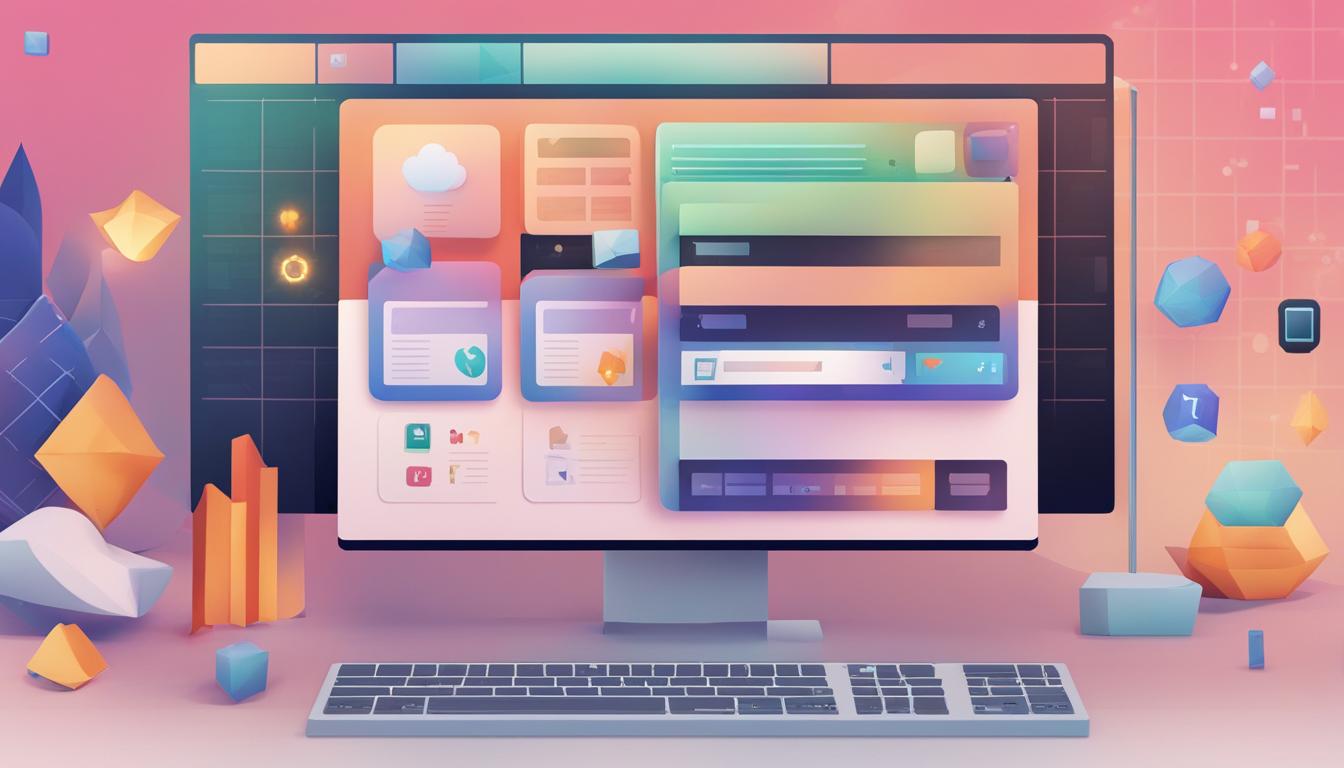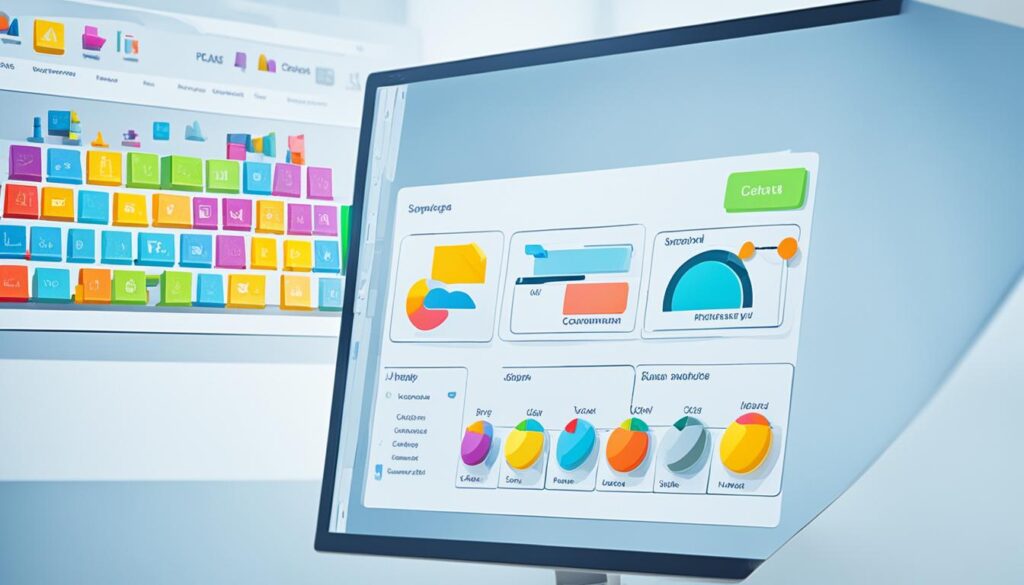
In the world of technology, the user interface plays a crucial role in determining the ease of use and accessibility of a device or system. One popular interface that has transformed the way we interact with computers is the Graphical User Interface (GUI). But what is a GUI, and which operating system interface uses point-and-click technology?
A GUI is a visual interface that allows users to interact with electronic devices through graphical icons and visual indicators. Instead of relying on complex command-line instructions, a GUI uses a point-and-click technology that enables users to navigate menus, select options, and perform tasks with the simple click of a mouse or other pointing devices.
So, to answer the question, the operating system that uses point-and-click technology is a GUI-based operating system. Several popular operating systems, such as Windows, macOS, and various Linux distributions, utilize GUI interfaces to enhance usability and provide a more intuitive user experience.
Key Takeaways:
- A GUI (Graphical User Interface) is an interface that utilizes graphical icons and visual indicators to allow users to interact with electronic devices.
- GUI systems employ point-and-click technology, enabling users to navigate through menus and perform tasks with ease.
- Windows, macOS, and Linux distributions are examples of operating systems that use GUI interfaces.
- The GUI interface has revolutionized computer interaction, making it more user-friendly and accessible to a wide range of users.
- The point-and-click technology of GUI systems has replaced text-based interfaces and introduced a more intuitive way of operating computers.
Evolution of GUI Systems
The graphical user interface (GUI) systems we know today have come a long way since their inception. Pioneers like Vannevar Bush and Douglas Engelbart laid the foundation for this revolutionary concept. Engelbart’s team at the Stanford Research Institute introduced the first GUI elements, including the mouse and tiled windows. These innovations were then refined at Xerox PARC, setting the stage for further advancements.
Apple played a significant role in advancing GUI systems with the introduction of their Lisa and Macintosh computers. These machines incorporated revolutionary features such as overlapping windows, icons, menus, and an aesthetically pleasing interface. Apple’s forward-thinking approach propelled GUI systems into the mainstream and forever changed the way we interact with computers.
Another key player in the evolution of GUI systems is Microsoft. The Windows operating system, specifically designed for IBM PC-compatible computers, brought GUIs to a broader audience. Windows provided a user-friendly and intuitive interface, making computing accessible to users from all backgrounds. The click-based operating system and mouse-driven interface simplified navigation and made tasks seamless.
The constant evolution of GUI systems has transformed computer interaction from complex and text-based to intuitive and visually engaging. Today, GUIs are synonymous with user-friendly operating systems that cater to the needs of both novice and experienced computer users.
Innovation and Advancements
Over the years, GUI systems have undergone significant advancements to enhance usability and improve the user experience. These innovations include:
- High-resolution displays: Modern GUI systems leverage high-resolution displays to offer crisp visuals and a more immersive experience.
- Touchscreen technology: With the rise of smartphones and tablets, touch-based interactions have become an integral part of GUI systems.
- Gesture controls: GUI systems now support gesture-based controls, enabling users to interact with their devices through intuitive gestures such as swiping, pinching, and zooming.
- Voice recognition: Voice-controlled GUI systems have gained popularity, allowing users to operate their devices using voice commands.
The Impact of GUI Systems
“GUI systems have revolutionized computer interaction, making it more user-friendly and accessible. They have transformed complex processes into simple, click-based operations, empowering users to navigate through menus, select options, and perform tasks effortlessly.”
The widespread adoption of GUI systems has had a profound impact on various industries and sectors:
- In the business world, GUI systems have improved productivity and streamlined processes, enabling employees to perform tasks efficiently.
- In the education sector, GUIs have made learning more interactive and engaging, with intuitive interfaces that cater to the needs of students.
- In the design and creative fields, GUI systems have provided artists and designers with powerful tools and a visually appealing environment to unleash their creativity.
- GUI systems have also played a crucial role in making technology more accessible to individuals with disabilities, offering assistive features such as screen readers and voice control.
The evolution of GUI systems continues to shape the way we interact with technology. With each iteration, these systems become more intuitive, user-friendly, and visually captivating, ensuring a seamless and immersive experience for users of all levels.
Benefits of GUI Systems
GUI systems, or Graphical User Interfaces, offer several benefits that make them the preferred choice for many users. These user-friendly operating systems provide an intuitive interface that appeals to both novice and experienced computer users. The point-and-click technology allows users to easily navigate through menus, select options, and perform tasks without the need for complex command-line instructions.
One of the key advantages of GUI systems is their visual engagement. These operating systems utilize icons and visual elements that represent various actions and functions, making it easier for users to understand and interact with the system. The graphical user interface enhances usability and improves the overall user experience.
Additionally, GUI systems enable multitasking, allowing users to work on multiple applications simultaneously. The click-based interface facilitates seamless switching between different tasks and applications, enhancing productivity and efficiency.
Here are some key benefits of GUI systems:
- Ease of use: GUI systems are designed to be user-friendly, making them accessible to a wide range of users.
- Visual engagement: Icons and visual elements enhance the user experience by providing visual cues for actions and functions.
- Point-and-click navigation: Users can easily navigate through menus and perform tasks without the need for complex command-line instructions.
- Efficient multitasking: The click-based interface allows users to work on multiple applications simultaneously, improving productivity.
Overall, GUI systems offer a click and operate system that is intuitive, user-friendly, and visually appealing. These operating systems with a graphical user interface have revolutionized computer interaction, making computing tasks more accessible and efficient for users of all levels of expertise.
Examples of GUI-Based Operating Systems
Several operating systems utilize GUI interfaces to provide a user-friendly experience. The most well-known examples include Microsoft Windows, Apple macOS, and various Linux distributions such as Ubuntu and Fedora.
Windows, in particular, has dominated the consumer market and has evolved through multiple versions, with each iteration improving the GUI experience. Its user-friendly interface, combined with a vast software library, has made it a popular choice for personal computers.
Apple’s macOS, known for its sleek design and seamless integration with Apple hardware, offers a visually appealing and intuitive interface. macOS provides a seamless user experience, making it a preferred operating system for many creatives and professionals.
“Windows, in particular, has dominated the consumer market and has evolved through multiple versions, with each iteration improving the GUI experience.”
Linux distributions, often used by tech enthusiasts and developers, provide customizable GUI environments. Ubuntu, one of the most popular Linux distributions, offers a user-friendly experience, focusing on simplicity and ease of use. Fedora, on the other hand, caters to advanced users and developers, providing cutting-edge technologies and robust performance.
These examples showcase the versatility and widespread adoption of GUI-based operating systems. Users can choose an operating system based on their preferences, whether they prioritize user-friendliness, visual aesthetics, or customization options.

GUI Operating System Comparison
| Operating System | Description |
|---|---|
| Windows | An operating system developed by Microsoft that offers a user-friendly interface with extensive software compatibility. |
| macOS | The operating system designed exclusively for Apple’s Mac computers, providing a seamless and visually appealing user experience. |
| Ubuntu | A popular Linux distribution known for its user-friendliness and simplicity, making it suitable for both beginners and experienced users. |
| Fedora | A Linux distribution that focuses on delivering cutting-edge technologies and providing a platform for developers and advanced users. |
Can Sensi-Temp Technology be Disabled in Point-and-Click Operating Systems?
Yes, sensi-temp technology can be disabled in point-and-click operating systems. To turn off sensitemp technology, simply navigate to the system settings and locate the option to disable the feature. Once disabled, the system will no longer regulate temperature automatically.
Conclusion
In conclusion, GUI systems have transformed computer interaction by providing a user-friendly and intuitive interface through graphical icons and visual indicators. With their point-and-click interface, GUI operating systems have replaced the text-based interfaces of the past and made it easier for users to navigate, select options, and perform tasks.
Examples of GUI-based operating systems such as Windows, macOS, and Linux distributions have gained widespread popularity due to their user-friendly nature and visually appealing design. These operating systems offer an array of features and customizable options that cater to the needs of different users.
As technology continues to advance, GUI systems will continue to evolve and enhance the user experience. The convenience and simplicity of the point-and-click interface have transformed the way we interact with computers, making them more accessible and user-friendly for individuals of all skill levels.








